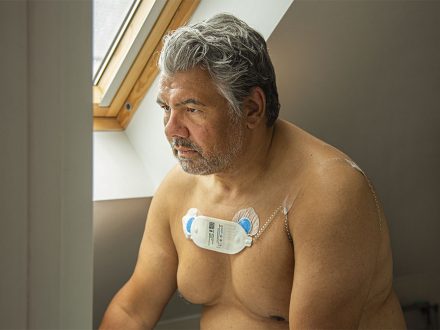Technology on the ward: what if it is worth it?
Hospitals and care systems have been battling with a lack of staff for a long time, something only emphasised by the Covid-19 pandemic.
As soon as there seems to be light at the end of the tunnel there will be extreme pressures to get care back to normal and get started on the backlog, while still holding half an eye on what and when the next wave will be. It is understandable that staff, and in particular the nurses 'in the trenches' do not have enough time or bandwidth to look at introducing anything new. They want to spend their time getting through the day as best as they can; providing the best care to their patients. But what if technology is worth it?
The effects of continuous pressures are visible across the country. Many departments, like paediatric intensive care units, are not working at full staff capacity. The pressures cause late discharges and people awaiting social care at home. There have been increased workloads in emergency departments, impacting ambulances and resulting in nurses feeling pressured into patient care in corridors. There have been warnings that increased pressures could lead to another workplace scandal and there are nurses considering leaving their jobs.
All of these undoubtedly could have an impact on patients, and that is where technology might be able to step in, argues Sensium European clinical manager Alexandra Honour.
For example: an 87-year-old patient was in the hospital recovering after a hip surgery. At 5am, the nurses carried out their standard observation ward rounds – resulting in a NEWS score of 0. The next observation round, in line with hospital policy, was scheduled for 12 hours later. The patient's temperature rose significantly soon after the ward round, triggering the Sensium remote monitoring system. An hour and a half after the initial ward round, a second observation round was done, resulting in a NEWS score of 7.
“The right pathways were initiated, and a chest infection was later detected. Of course, we cannot know for sure that, without the Sensium monitoring, there would not have been a nurse that would've checked up on this patient in those 12 hours. But would it be that much of an unlikely scenario, if the nurses are flying around the ward stressed and understaffed? Healthcare staff are not superheroes, nor should they have to be. They need more hands and eyes!”
The case study above occurred in one of the hospitals which implemented Sensium at the height of the pandemic. One of the keys to success is the early involvement of the nursing staff.
“While many nurses will see the benefit of technology, adjusting their workload from one day to another just because they've been told to, is not the way to go. With Sensium, there is a clinical team with registered nurses involved from the very start. We will always highlight the nursing view and work with the hospitals to adjust SOPs in a way that will benefit the nurses and the technology,” explains Ms Honour.
Another key to adoption according to Sensium? “Integration with existing systems, for example the EMR. This might sound very technical and boring, but if technology makes the measurement of observations easier, there is more time for actual patient interaction. Better patient care should always be at the heart of innovations.”
In the case of wireless monitoring, it might mean that a patient does not have to be interrupted as many times in the night or that a patient care pathway might be reduced based on additional data.
Technology like Sensium will not replace nursing care. Instead, it can be used to give more context to a patient’s condition by looking at vitals trends and observations combined. It will give them more data to make decisions and can indicate which patients might need more care – without having to rely on a ‘snap-shot’ observation round every 8 hours.
In the end, the nurse can spend time with patients who might need a little bit of extra attention and provide enhanced care for patients.
Technology – if integrated into the workflow – can help with clinical decisions. It can help to detect and prevent serious patient deterioration, as well as give nurses the space to focus on things that really matter.
About Sensium
Sensium delivers hospital-grade wireless monitoring across the entire patient journey from acute care to home, working with healthcare staff to provide care that detects early deterioration and improves patient outcomes.
Learn more about how Sensium can help on Sensium.co.uk








Gloss